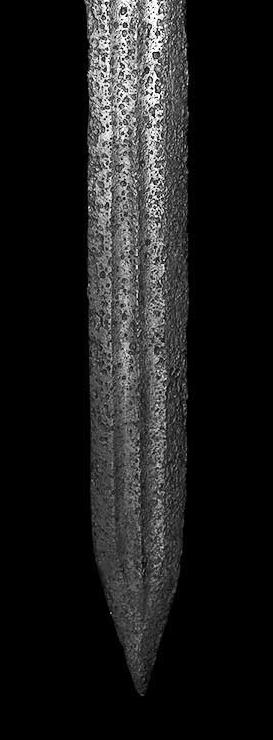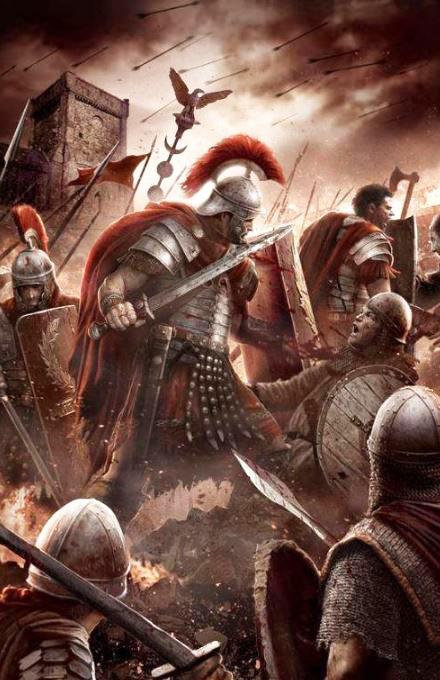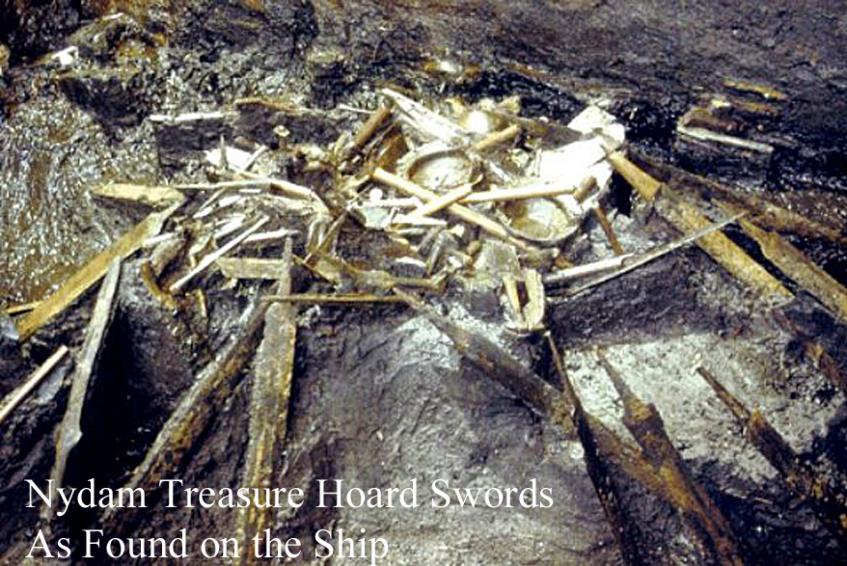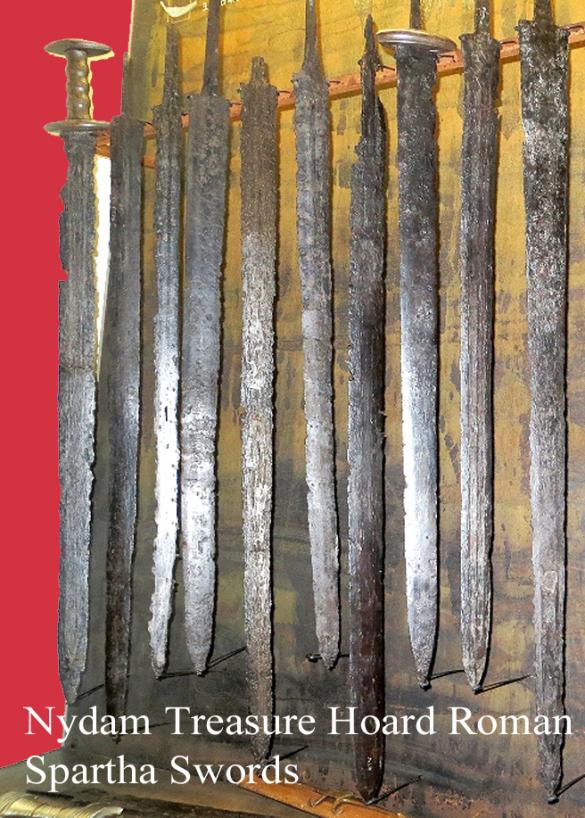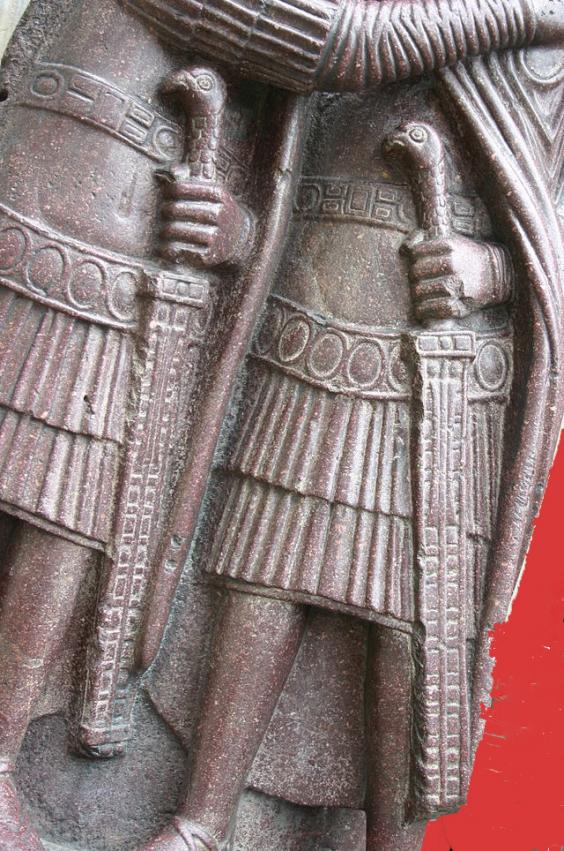A Most Rare & Superb, Original, Imperial Roman Legionary's & Cavalryman's Spatha Long Sword, Late 3rd Century Over 1700 Years Old. The Very Form Of Sword As Our Tribune’s Ring Owner Would Use.
Made and used from the eras of Emperor Tacitus and Emperor Diocletian to Emperor Constantine the Great. Only the second example we have seen or offered in the past 15 years. A double-edged original Imperial Roman period spatha sword of the typology of Illerup Wyhl, with excellently preserved long blade, long tang, with triple fullers along its length, parallel cutting edges tapering down towards its point, Fine condition. What a fabulous original ‘statement piece’ for any collection or decor. In the world of collecting there is so little remaining in the world from this highly significant era in European and British history. And to be able to own and display such an iconic original representation from this time is nothing short of a remarkable privilege. A wonderful example piece, from the ancient imperial age. Effectively, from this time of almost two thousand years ago, from a collectors point of view, almost nothing else significant survives at all, only the odd small coin or very rarely seen, and almost impossible to own, carved statuary.
The iconographic sources indicate that Roman swords underwent big changes in the later 2nd and 3rd centuries. Longer swords, more popular within Germanic and Celtic cultures, would have been useful for fighting on horseback, but they were soon spread among the infantrymen and massively produced in the Roman workshops, from which they were brought home by many barbarians after mercenary or auxiliary service in Roman army. This, together with the possibility of war booty, explains why the mass of these swords have been found in the territories of the Barbaricum. The graves and the ritual water deposits of the marshy areas of Illerup Adal, Thorsberg, Vimose and many other localities (Simris) have delivered an amount of swords. Illerup has produced fine well-preserved swords, some with rather unusual patterns. Dr. Miks refers to the spathae of the 'lllerup-Wyhl' type I as to a group of blades which in terms of their proportions, dimensions and shape, are probably a mixture of blades of the more classical 'Straubing-Nydam' and 'Lauriacum-Hromowka' types of long Roman swords. They are one of the most complicated category of Late Roman swords and therefore difficult to clearly identify.
The Spatha was first introduced to the Romans by Celtic Mercenaries during the Second Punic War. The Celts would have used weaponry and armour from their homeland, and one of the Celtic weapons would have been the Spatha. Many believe that the Spatha was adopted by the Romans due to contact with Germania, however this is not true.
The earlier gladius sword was gradually replaced by the spatha from the late 2nd to the 3rd century. From the early 3rd century, legionaries and cavalrymen began to wear their swords on the left side, perhaps because the scutum had been abandoned and the spatha had replaced the gladius.
In the imperial period, the Romans adopted the original Greek term, spáthē (σπάθη), as spatha, which still carried the general meaning of any object considered long and flat. Spatha appears first in Pliny and then Seneca with different meanings: a spatula, a metal-working implement, a palm-leaf and so on. There is no hint of any native Roman sword called a spatha.
Referring to an actual sword, the term first appears in the pages of Tacitus with reference to an incident of the early empire. The British king, Caractacus, having rebelled, found himself trapped on a rocky hill, so that if he turned one way he encountered the gladii of the legionaries, and if the other, the spathae of the auxiliaries. There is no indication in Tacitus that they were cavalry.
The next mention of spathae is in the 5th century, by Vegetius, now as a weapon carried by infantry. The term "Roman Iron Age" refers approximately to the time of the Roman Empire in north Europe, which was outside the jurisdiction of the empire, but, judging from the imported Roman artifacts, was influenced by Roman civilization. One source of artifacts from this period are the bogs of Schleswig, Holstein and Denmark. Objects were deliberately broken and thrown into the bog in the belief that they could go with a deceased chief on his voyage to a better place.
A cache of 90 swords was found at Nydam Mose in Denmark in 1858. They were in the form of the spatha and therefore have been classified as "Roman swords". They are dated to the 3rd to 4th centuries. Many connect the Nydam cache with the sword of Beowulf, who was supposed to be a contemporary. See two photos of these in the gallery. Another photo in the gallery is of a depiction of Roman spartha swords, with hilts fashioned in the shape of eagles' heads, in Roman carved statuary (Portrait of the Four Tetrarchs, c. AD 300) in Venice.
This is the typical sword used to great effect, for example at the Battle of Cibalae
The Battle of Cibalae was fought in 316 between the two Roman emperors Constantine I (r. 306–337) and Licinius (r. 308–324). The site of the battle near the town of Cibalae in the Roman province of Pannonia Secunda, was approximately 350 kilometers within the territory of Licinius. Constantine won a resounding victory, despite being outnumbered.
The opposing armies met on the plain between the rivers Sava and Drava near the town of Cibalae. The battle lasted all day. The battle opened with Constantine's forces arrayed in a defile adjacent to mountain slopes. The army of Licinius was stationed on lower ground nearer the town of Cibalae, Licinius took care to secure his flanks. As the infantry of Constantine needed to move forward through broken ground the cavalry was thrown out ahead, to act as a screen. Constantine moved his formation down on to the more open ground and advanced against the awaiting Licinians. Following a period of skirmishing and intense missile fire at a distance, the opposing main bodies of infantry met in close combat and fierce hand-to-hand fighting ensued. This battle of attrition was ended, late in the day, when Constantine personally led a cavalry charge from the right wing of his army. The charge was decisive, Licinius' ranks were broken. As many as 20,000 of Licinius' troops were killed in the hard-fought battle. The surviving cavalry of the defeated army accompanied Licinius when he fled the field under the cover of darkness.
See Bishop, M.C. & Coulston, J.C.N., Roman military equipment, from the Punic wars to the fall of Rome, London, 1993; Miks, C., Studien zur Romischen Schwertbewaffnung in der Kaiserzeit, I-II Banden, Rahden, 2007; D’Amato, R., Roman army Units in the Western Provinces, Oxford, 2019; for very similar specimens see Miks, 2007, n.A146,36,37,43 (Illerup).Blade weight 1.1 kg, 98.5cm (38 3/4"). In the world of collecting early weaponry a sword is defined as it’s blade, it’s hilt was separate often made of vulnerable woods and materials that do not survive the ravages of time. You simply do not often see such rare and iconic original ancient swords used by one of the most famed empires in the world, during the period of one of the greatest eras in classical history, let alone have the opportunity to own one. We will include for the new owner a complimentary wooden display stand, but this amazing ancient artifact of antiquity would also look spectacular mounted within a bespoke case frame, or, on a fine cabinet maker constructed display panel.
Blade length 3.75 inches, full length including tang 39 inches, 2.3 pounds {37 ounces} weight.
Code: 23517
9750.00 GBP



